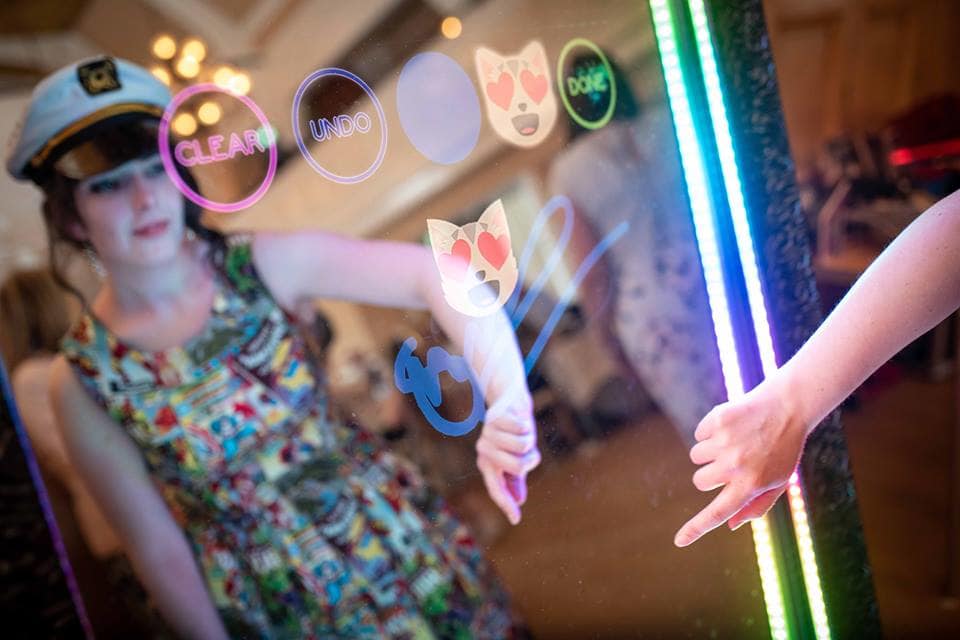The world of marketing is ever evolving and today, more than ever, it’s important to keep up-to-date with the latest trends, key concepts, and continuous advancements in mobile and digital marketing technology.
Gone are the days when a purely traditional marketing plan would engage your audience and capture the attention of your target market. While a blended approach between traditional and digital marketing is often preferred, we are seeing a significant increase in effort, budget and investment being made solely into digital marketing, and it is set to stay that way for the foreseeable.
Where should you be investing your time and effort?
What marketing trend will be the next big thing?
And where can you make a significant return on investment?
Here are ten of the latest marketing trends that you need to use to draw massive attention to your brand:
- Video, Video, Video
The old adage “a picture speaks a thousand words” still holds true, but if that’s the case then by modern standards a video speaks a million.
Video marketing has been steadily increasing in popularity over the last five years, with more businesses than ever using animated explainer videos, live-action promotional videos, and short but engaging videos embedded into websites and on social media platforms, such as Facebook, to grab the attention of their target audience, and for good reason –
- YouTube viewers watch a billion hours of video every day.
- Facebook users consume over 8 billion videos every day.
- Video consumption on Instagram has gone up 40% in 2018.
From staged promotional videos that make use of storyboarding and good lighting to off-the-cuff Facebook Live and Instagram Stories – video marketing offers flexibility, and it doesn’t need to be expensive thanks to the high spec cameras available on modern smartphones.
Just remember to include captions – a study in 2017 found that 85% of Facebook video is watched with the sound turned off!
- BoomaBooth
Most of us have had a great experience with a PhotoBooth by now, right? The chances are you’ve come across one at a friend’s wedding, a corporate event, or a charity fundraiser – they usually come complete with hilarious props and the option to commemorate the event (and your funny poses) with friends and colleagues forever in the shape of a keepsake keyring.
As is the case with all technology, PhotoBooths have moved on and their latest incarnation provides considerable bang for your marketing buck – say “hello” to BoomaBooth.
This innovative digital “photo booth” offers hugely popular boomerangs as well as images, which can include custom-made and bespoke brand graphics. The final image or boomerang is sent directly to the user’s phone or email address, which puts your brand directly in your target audiences’ pocket.
This can be capitalised on even further – because we’re all so social in 2018, chances are the majority of BoomaBooth users will share their images on their social media platforms – significantly increasing your reach at no extra cost, and this can even be encouraged through the use of a social media competition where a winner is selected from users who share the image with a brand-related hashtag of your choice
- Influencers
Bloggers, YouTubers, and social media influencers have been around for a few years now, but marketers haven’t yet taken full advantage of forming relationships with these everyday people who have a lot of, well… influence.
While celebrity endorsements have been commonplace for a very long time, authentic collaborations and partnerships with “normal” people who have their own online following are becoming more and more popular, and are yielding better and better results.
These influencers already have the attention of your target audience, they have a relationship with your target market, and your current and potential customers trust them – this gives you a significant head-start when promoting your brand to specific individuals, and when it’s done right, the rewards are considerable.
It’s important to note that there are influencers available for practically every niche and budget – so companies large and small can get in on the action.
- Data Protection
In 2018, the General Data Protection Regulation was brought into force by the European Union, which seeks to better control and regulate how businesses use personal data. While this has presented headaches for companies who now must conform to the new legislative requirements, it has also brought opportunities for marketers who understand GDPR – and importantly how to use it – to think smarter about their marketing activities.
While many businesses took the bury-your-head-in-the-sand approach to GDPR, very real cases – such as the Cambridge Analytica Facebook scandal – have highlighted just how important data protection is in today’s digital age, and as a result, all marketers need to sit up and pay attention.
Aside from the legal implications, another important outcome from GDPR implementation is the decision by Facebook to place more emphasis on the “friends and family” approach that it was originally intended for, which can be seen through their new television adverts in the UK.
While this is great news for those of us who prefer not to be spammed with ten ads for every one post in our newsfeed, it could be bad news for brand engagement, which is where Facebook Groups for brands are taking on a life of their own.
- Platform-Specific Content
Whether it’s an image, a video, or a link to a blog post, historically marketers created one piece of content and shared it across all of their online platforms along with a link back to their website, because website hits were considered the Key Performance Indicator (KPI) to aim for.
Today, due to the sales pipeline and integration development of social media, as well as the nuanced nature of target audiences, marketers are realising that each platform is significant in its own right, and that content should be tailored and curated for each individually.
That’s not to say that “cornerstone” content can’t or shouldn’t be shared across multiple platforms, but there are occasions where each platform can function as a hub for its own content.
What’s important is that the message or story is consistent, but the method of delivery can be tailored to what best suits the intended audience or the nature of the platform it is being shared on. This will help to significantly boost engagement in 2018, and beyond.
- Content Is King
Content is quickly becoming the most important piece of the marketing puzzle, with brands releasing podcasts, magazines, and newsletters, as well as supporting activism campaigns with uplifting messages, none of which are overly “salesy” or have an obvious and direct link to their specific products or services.
In fact, in 2017 the brands that have been the most successful are the ones that have put content at the forefront of their marketing strategy, with many operating their marketing departments like a media company.
It doesn’t matter which platforms you use to spread your message, the point is this – tell a story, and create interesting, informative, and engaging content that isn’t directly sales-related.
- Make It Human
The trend in recent years has been to beat the algorithms – using hashtags, header tags and Search Engine Optimisation (SEO) to trick the system and get your brand noticed. However, the next generation of marketing is focusing on creating authentic and organic content that genuinely appeals to your target audience to get attention, thereby creating a community of engaged followers who actually want to know what your brand is up to.
Ultimately, Google personalises search results based on search history and patterns, and Facebook and Instagram push content to the top of users’ feeds based on who they engage with most often – the more you meet the needs of your audience and focus on the humans – the less likely it is that you’ll need to worry about algorithms.
- What’s Your Message?
Brands that give back to the community or have a social impact are out-performing their competitors who don’t engage in the same way. Over 40% of consumers find it at least somewhat important for brands to take a stand on social and political issues – the age of the conscious shopper has dawned, and it’s on the rise.
As a business, this engagement needs to be done with consideration. However, it’s important to note that people are more engaged with brands they can identify with, who they feel represent them and their beliefs.
Consumers no longer consider just the benefits of your products or services when they make a purchase. In fact, research shows consumer decisions are less influenced by price point today than just three years ago – instead, they want to know what your brand stands for, and what you’re doing outside of your business to help the local, and even global, community.
- Gen Z, Please Stand Up
It feels like everywhere we turn we’re still being hit with the “Millennial” sledgehammer. Who are these mythical avocado-eating #FitFam creatures, and just what do they want? It’s always important for brands to understand the wants, needs, and desires of the generation they are marketing to – but now we have a new one to worry about – Generation Z.
Kids born in the late 90’s onwards are becoming adults who can make purchasing decisions, and brands want to know how to reach them. Here are some key things to know about Gen Z:
- By 2020 the global Gen Z population is expected to reach 2.56 billion.
- 85% of Gen Z use social media to find out about new products.
- 32% of Gen Z watch at least an hour of video content online each day.
- Nearly 50% of Gen Z spend 10 hours a day online.
The preferences of your target market are undoubtedly important and will influence your marketing mix. For example, 63% of Gen Z prefer to see real people in adverts instead of celebrities, which ties in nicely with the boom we’ve seen in influencer marketing.
- Consumers Expect Transparency
A few years ago, the transparent brands were the “cool” ones. It made them daring, different and edgy. Today, consumers expect brands to be transparent. If you aren’t upfront and honest about your businesses practices not only will you lose popularity but you also risk exposure, and usually in a very public setting.
In years gone by a customer, complaint may have taken the form of a letter, phone call, or strongly worded email, but today consumers take to social media like never before to air their grievances publicly, which is why it’s important for businesses to maintain open communication with their consumers and customers.
While social media offers numerous and significant benefits to business, it also opens up a platform where the consumer is the one in the driving seat, and you need to ensure that you respond timely, appropriately, and transparently on such a platform if things go wrong.
- 81% of consumers believe social media has increased accountability for brands.
- 70% of consumers feel that social media has forced brands to become more transparent.
With technological developments occurring at a lightning pace, and consumer-business interactions continuously changing, it’s likely that mobile and digital marketing will continue to evolve on at least an annual basis for the foreseeable future, which means to be seen and grab your audiences’ attention, you need to stay ahead of the pack.
Get your next event noticed with one of our amazing activations – choose Selfie Mirror NI, Beaut Booth, Retro Mirror or Boomabooth and get your customers attention!



